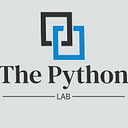Member-only story
Mastering the Black-Scholes Model: A Python Journey into Options Pricing
Options trading has become an integral part of modern finance, offering traders the ability to hedge risk or speculate on the future price of assets. At the heart of options pricing lies the Black-Scholes model, a mathematical framework that has revolutionized the way we think about financial derivatives. In this extensive tutorial, we will embark on a Pythonic journey to implement the Black-Scholes option pricing model. We’ll cover the theoretical foundations, delve into the Python implementation and apply our model to real-world financial data.
Let’s set the stage by understanding the basics of options and the need for a robust pricing model. An option is a financial derivative that gives the holder the right, but not the obligation, to buy or sell an underlying asset at a specified price on or before a certain date. The two main types of options are calls and puts. A call option allows the holder to buy the underlying asset, while a put option allows the holder to sell it.
The Black-Scholes model, developed by economists Fischer Black, Myron Scholes and Robert Merton, provides a theoretical estimate of the price of European-style options. The model assumes that the price of the underlying asset follows a geometric Brownian motion with constant drift and volatility. Under these assumptions, the…
